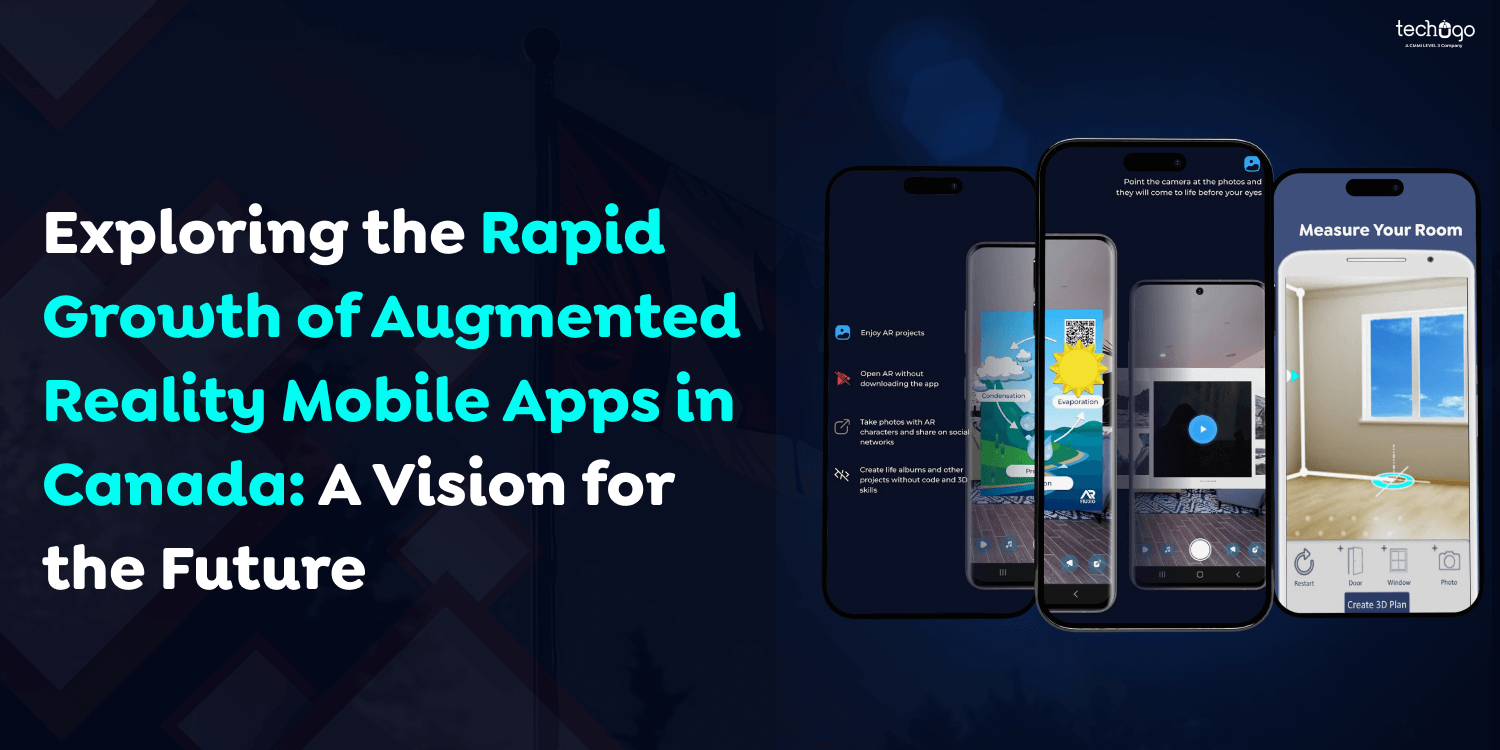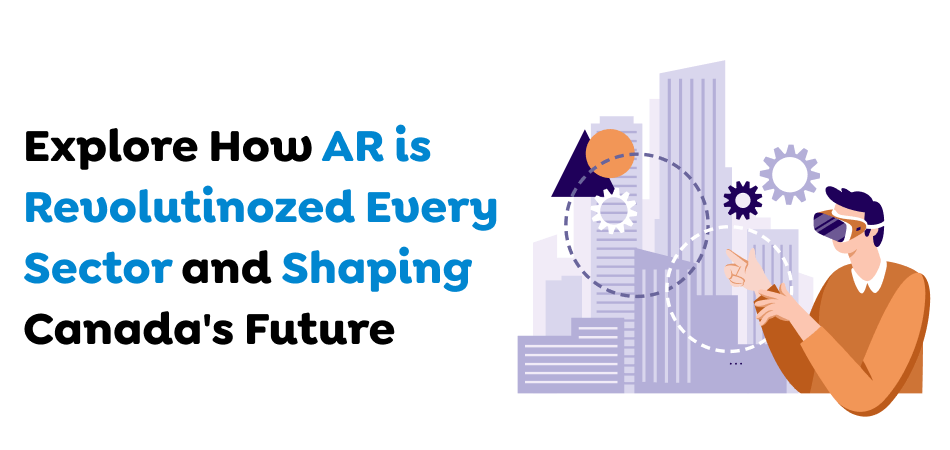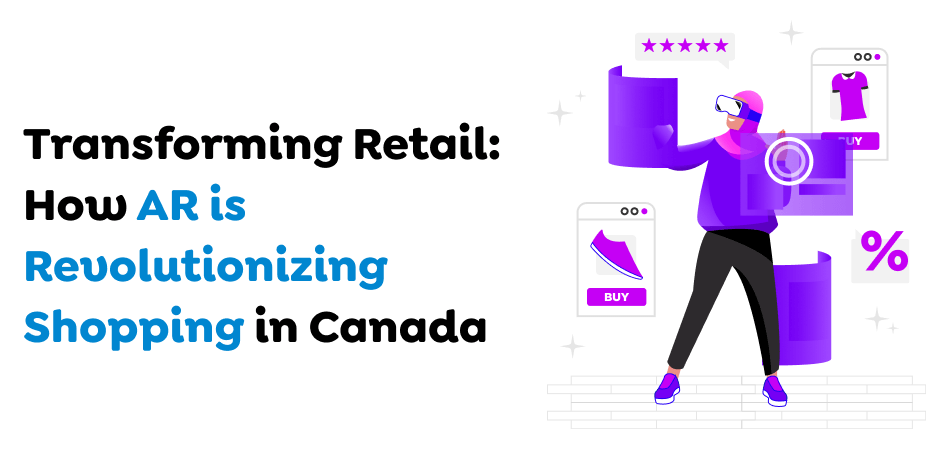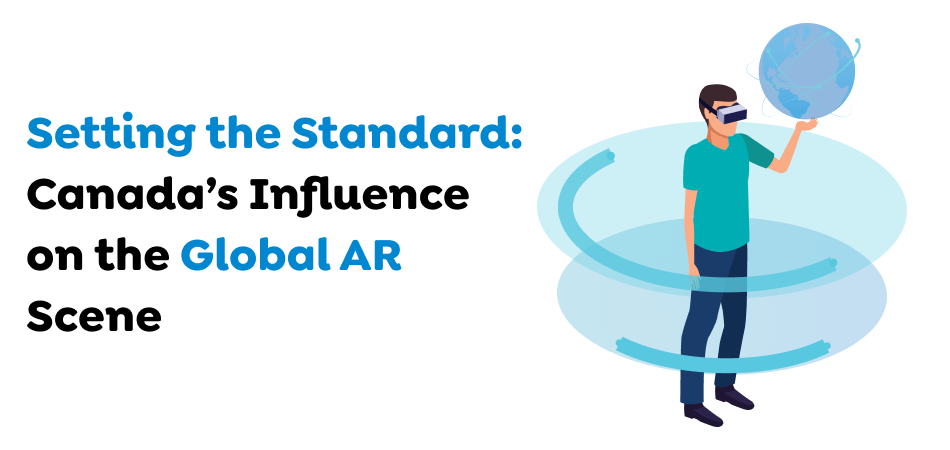10 Sep 2024
Exploring the Rapid Growth of Augmented Reality Mobile Apps in Canada: A Vision for the Future
Matthew Connor

While a myriad of technologies have shaped our world, none have had the transformative impact of an augmented reality mobile app. Once a futuristic dream, AR is now a daily reality in many sectors, where the virtual and physical worlds merge in terms of use and functionality. Canada, uniquely positioned in the augmented reality mobile app market, has emerged as a leader in introducing new applications for AR technology, setting the pace for global innovation.
Let’s explore more together!
Canada’s Thriving Tech Ecosystem: The Fertile Ground for AR Innovation

Imagine strolling through the bustling streets of Toronto, Vancouver, or Montreal. The air is charged with a sense of innovation, a feeling of energy that fuels business. These cities, known as the Canada Tech Hubs, have emerged as the hotbeds of technology, attracting startups, investors, and enthusiasts. This innovative spirit and progressive technologies have made Canada a source of groundbreaking innovations like an augmented reality mobile app.
Government Support and a Culture of Innovation
Canada has been paying serious attention to the development of AR, and one of the reasons is that the government encourages technological advancement. Many sources of funding, such as grants, R&D tax credits, and funding programs offered by the Canadian government to startups and technology firms, have facilitated this move by nudging them to embrace an innovative frontier like AR. This supportive ecosystem has allowed Canadian developers to learn, test and introduce some of the best Augmented Reality mobile app experiences currently on the market.
Canada’s diverse population, with its myriad cultures and viewpoints, provides a fertile ground for developing AR apps that cater to a wide range of users. This diversity not only enriches the services but also gives Canadian AR apps a global appeal.
Also Read : On-Demand App Solutions Revolutionized The Top 20 Industries
Transforming Industries: The Wide-Reaching Impact of AR Mobile Apps

AR is no longer mere hype in Canada; it is an absolute force revolutionising almost all sectors. In the retail industry, education sector, healthcare sector, entertainment and so on, Augmented reality mobile apps are transforming how businesses and people experience products/services.
Retail: Redefining the Shopping Experience

Forget the days when e-shoppers got a primary flat picture of the products and store they were buying from. Now, with AR mobile apps, consumers in Canada can virtually shop for that new locally brewed furniture or shoes as if they were going to buy it before feeling it with their fingers in a shop. Some Canadian digital solutions providers, such as Shopify, have already incorporated AR into their solutions, allowing retailers to deliver these engaging experiences by enhancing the customer experience, pushing sales, and minimising return rates.
For instance, IKEA Canada’s AR app lets buyers see how furniture would look in their homes before buying it. This app has revolutionised the home furnishing business through the convenience and confidence it offers rather than actual shopping expeditions.
Education: Bringing Learning to Life

As the paper describes, AR is used in classrooms all over Canada to make learning more meaningful and productive. Consider a historical situation when students could watch a historical event live or a scientist experiment with substances without fear of an explosion or contamination. Modern AR mobile applications change the concept of learning, making abstract ideas clear and accurate.
Other innovative Canadian AR companies, like Merge, have developed AR gadgets used in schools to support learning in STEM (Science, Technology, Engineering, and Mathematics). These tools help students learn practical lessons with fun and gain a better perspective on arguments and concepts in a subject.
Also Read: How to Develop a Successful Virtual Reality Application
Healthcare: Enhancing Patient Care

AR is making a significant impact in Canada’s healthcare industry, enhancing both patient care and medical processes. Mobile applications are now helping surgeons visualize complex operations, leading to greater surgical accuracy. In rehabilitation, AR is being used to create personalized therapy programs, tracking patient progress and providing immediate feedback.
One example is the AR app created by Precision OS, a Canadian–based company specialising in medical education tools. It is an application that allows surgeons to train themselves effectively before entering the operating theatre. It’s referred to as having demolished surgical errors and distinctive patient safety.
Entertainment: Immersing Audiences in New Realities

Canadian media culture has always been dynamic, and this has always been the case since the early days of the entertainment business. Augmented reality or AR mobile apps have created new possibilities for storytelling in games and other interactive fields that may cause excitement among people.
Canada has been at the forefront of developing AR games, with products such as Pokémon GO becoming instant global hits. This global innovation, partially revolutionised by a group in Vancouver, simulates the natural world and the digital one, making it a very realistic game that has set a benchmark in the development of AR games.
Still, AR has influenced more than just games. For example, the Canadian Film Centre has been experimenting with integrating AR into movie and television production to offer viewers new experiences through interactive narratives.
Future Prospects: The Road Ahead for AR Mobile Apps in Canada

In the coming years, many opportunities are waiting to be explored in the context of AR mobile apps in Canada. But it could be a smoother sail from here onwards; some risks are inherent in the process. If Canada is to capitalise fully on this trend, app developers and businesses in the country must overcome specific challenges. These challenges are data privacy, Technological constraints, and User acceptance.
Overcoming Challenges: Data Privacy and Technological Hurdles
Data protection and security are among the most significant issues in the AR industry. AR apps often need to access vast amounts of personal info, such as current location, rear and front camera, biometric data, etc. This raises the issue of the security of the obtained data, which, if well handled appropriately, will favour user uptake.
New challenges also arise regarding technological aspects like quality AR gear and the processes of advancing the software. Even though smartphones are enough to bring AR to the masses, there is demand for augmented reality devices like AR glasses that can provide viewers with greater immersion.
The Role of 5G and AI: Accelerating AR Innovation

The emergence of 5G will play a significant role in AR in Canada as it can potentially make a substantial change. 5G networks, which are characterised by higher data availability, will make it possible to develop new AR applications with more complicated characteristics and better response rates. This will create new opportunities for implementing real-time multi-user AR applications where users can interact with virtual and other users’ objects similarly to in real life.
Predicting that AI will be vital in shaping AR mobile app enhancement is essential. When both AI and AR are implemented into the app, developers can make the applications more advanced. They can instantly identify patterns in the users’ behaviours and make corresponding adaptations. This will result in more accurate and relevant experiences in virtual shopping advisors or AI-based educational applications.
Also Read: How an AI App Development Company Drives Innovation in Mobile Applications
The Future of AR in Canada’s Workforce
AR is not just a tool for entertainment or consumer applications; it can potentially revolutionise the Canadian workforce. AR can provide workers with real-time information, improve efficiency, and reduce errors in manufacturing, logistics, and healthcare industries. For example, AR apps can guide factory workers through complex assembly processes or help doctors diagnose conditions more accurately.
The future of AR in Canada’s workforce also includes remote collaboration. With AR, teams can work together from different locations, sharing a virtual workspace to interact with 3D models and data in real-time. This has the potential to increase productivity and drive innovation across various sectors.
Canada’s Role on the Global AR Stage: Leading by Example

Canada’s influence in the global AR market is growing, and its commitment to innovation positions it as a leader in developing AR technologies. As Canadian companies continue to push the boundaries of what AR can do, they are setting an example for the rest of the world to follow.
Collaboration and Knowledge Sharing
One of the critical strengths of Canada’s AR ecosystem is its collaborative spirit. Canadian developers and companies often work together, sharing knowledge and resources to advance the state of the art. This collaborative approach has led to the development of AR solutions that are not only cutting-edge but also practical and user-friendly.
International partnerships are also contributing to Canada’s AR success. By collaborating with global tech giants and research institutions, Canadian companies can stay at the forefront of AR innovation and bring the latest advancements to market.
AR and Social Impact: Creating a Better World

Apart from the commercial use of AR, it can also contribute to societal changes. In Canada, AR is being applied to social and environmental problems with an inclusive perspective, from assisting individuals with disabilities in their daily activities to changing people’s attitudes toward climate change.
To illustrate this, consider an AR app created by a Canadian non-profit organisation called “Look What I See.” This app is designed to help users see the world as someone with a visual impairment would. This tool is created to make people more empathetic and help them understand each other; it is one way to show how AR can make society more tolerant.
Conclusion: The Bright Future of AR Mobile Apps in Canada

This tremendous growth of AR mobile apps in Canada justifies the nation’s great innovativeness and willingness to adopt new technologies. New technological advancements in AR will undoubtedly have a far more significant impact on the future of several different fields, including, but not limited to, retail, education, healthcare, and entertainment.
Such valuable resources, combined with a favourable governmental approach and a propensity toward cooperation, make Canada one of the world’s leaders in the AR market. The challenges in the future seemed not overwhelming but promising, and the possibilities for development and consolidation seemed practically unlimited.
With AR finding its way into our daily lives, expect Canadian companies and developers to lead the way in advancements. Undoubtedly, the future of AR in Canada is promising, and it has yet to start.
Get In touch
We are excited to here from you and let’s start something special Together. Call Us for any inquiry.
Write us
sales@techugo.caJust a call away
About you




